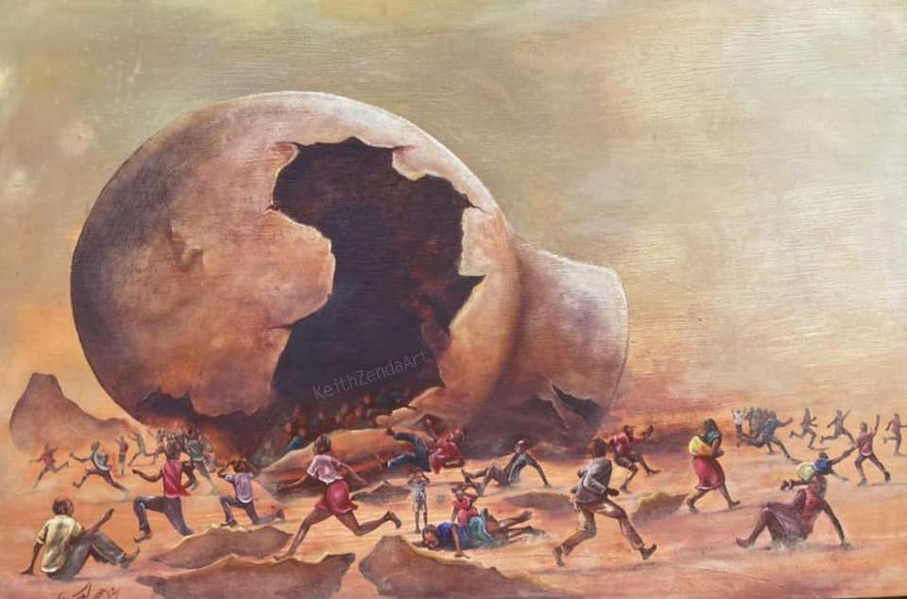"Africa is breaking into pieces, but through unity and collective effort, we can mend the fractures and restore our heritage."
Zenda employs a surrealistic approach, juxtaposing reality with symbolic imagery. A large, broken pot serves as the central metaphor in both paintings. Traditionally, a pot symbolizes nourishment, community, and continuity in many African cultures. In these paintings, the pot lies shattered in a barren landscape, drawing viewers into a narrative of disintegration and chaos. The use of color is striking, with a warm, earthy palette of browns, oranges, and ochres dominating the scenes. These colors evoke Africa’s natural landscape and symbolize its cultural richness. However, the desolation and chaos depicted create a poignant tension, contrasting the warmth of the colors. Zenda's paintings convey a deep sense of loss and despair regarding Africa’s future. The broken pot, a recurring symbol, represents the continent itself—once whole and nurturing, now fractured and in ruins. The fleeing people symbolize the African population, scattered and divided, losing their cultural and national identities in the process. Message and Hope Despite the grim depiction, there is an underlying message of hope and a call to action in Zenda’s work. The paintings remind us of the urgent need for unity, leadership, and a collective effort to rebuild and restore the continent. The broken pot, while symbolizing destruction, also suggests that it can be mended with effort. This calls for Africans to come together, embrace their cultural heritage, and work towards a unified and prosperous future. In conclusion, Keith Zenda’s paintings are a powerful commentary on Africa’s state, using symbolic imagery and a surrealistic style to convey a message of disunity and loss. However, they also carry a message of hope, urging Africans to unite and rebuild their continent. Through his art, Zenda highlights the problems and inspires a vision of a better future, reminding viewers of the resilience and strength inherent in African culture and identity.

